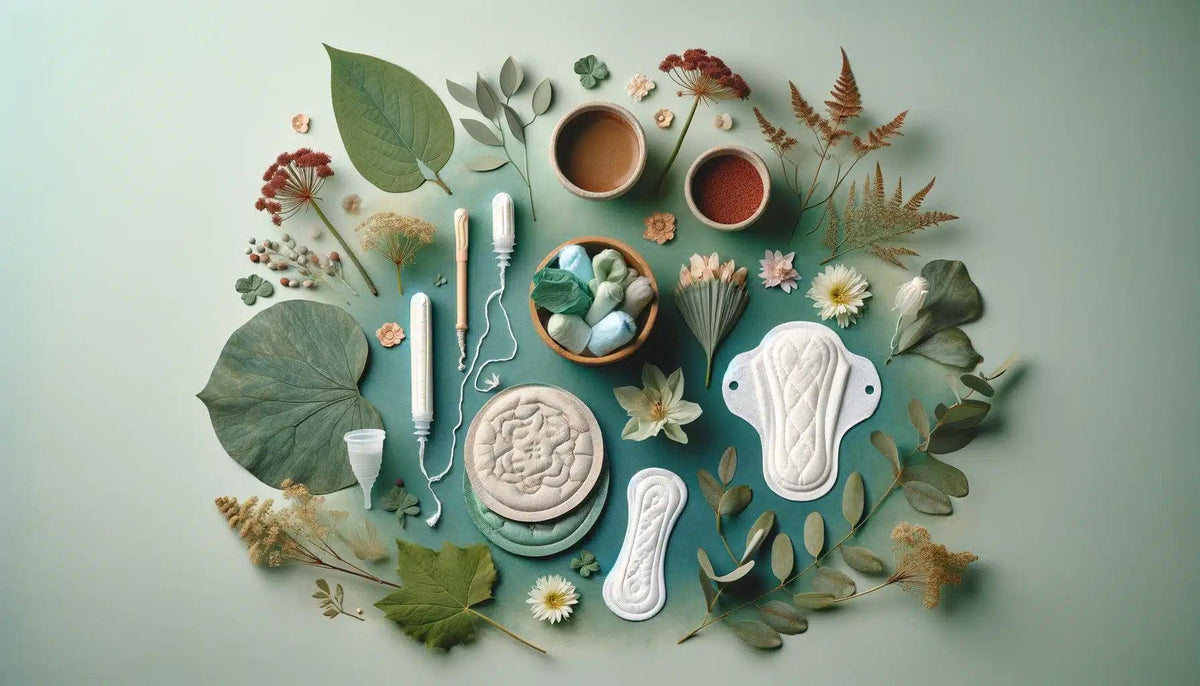
Which Period Products Should You Use During Your Period?
|
|
Time to read 3 min
|
|
Time to read 3 min
Do you know how many times women have their periods on average during their lifetime? Between puberty and menopause, a woman will experience approximately 450 menstrual cycles, or 2,250 days of menstruation, if we consider an average 5-day cycle. So, imagine the number of menstrual protections they use! Disposable pads and tampons are currently the most widely used protection for menstrual hygiene, but washable and eco-friendly alternatives are emerging on the market.
When it comes to disposable period protection, we can distinguish two main categories: internal protection, i.e. tampons, and external protection, more commonly called sanitary towels.
This small cylinder, which you insert into your vagina, with or without an applicator, and which absorbs menstrual flow, remains one of the most widely used period protections. Its practicality (it remains invisible, it allows you to bathe, etc.) appeals to many women.
When you got your first period, this is probably the protection you turned to (we're not necessarily comfortable enough with our bodies at puberty to use internal protection right away). The sanitary napkin is placed inside the panties and is held in place by adhesive strips and/or retractable wings on the sides. The vast majority of women use disposable sanitary napkins, alone, or in addition to another method of protection (tampon or menstrual cup).
While these disposable protections are the most widely used by women, one might wonder about their questionable composition. The presence of chemical substances (dioxins, furans, glyphosates, chlorine, hydrocarbons, etc.), toxic to health and suspected of being endocrine disruptors or carcinogens, has been detected. It should also be noted that these disposable period protections have repercussions on the environment, since they take around 500 years to degrade, as long as a plastic bottle!
What is toxic shock syndrome (TSS)? It's an infectious disease caused by a bacterium: Staphylococcus aureus. This bacterium produces a toxin (TSST-1), which enters the bloodstream and affects our organs.
It is the improper use of tampons and menstrual cups (in other words, internal protections, which block the blood inside the vagina) that promotes the growth of bacteria and exposes people to toxic shock syndrome. Hygiene is often the culprit. It is important to remember to use tampons adapted to your menstrual flow and to change them regularly. The same goes for the cup, which should not be worn for too long, rinsed well with water between each withdrawal, and sterilized in a pan of boiling water between two cycles.
Although the consequences can be extremely serious ( in 2020, Maëlle, a 17-year-old Belgian girl, lost her life after toxic shock ), toxic shock syndrome fortunately remains a rare disease.
Today, health is at the heart of everyone's concerns. Women want to take care of themselves, their bodies, and don't want to put potentially dangerous products in their panties or vagina! Fortunately, healthier and more ecological solutions have emerged. And once you've learned about washable sanitary protection, it's hard to do without it. They actually have a large number of advantages over their disposable counterparts. Good for the planet, for your health, for your wallet... sustainable alternatives have it all! There are distributors of washable sanitary protection or actions led by the BDU . Find out more!
It's a small silicone bell, which comes in different sizes. The principle is to insert it inside the vagina by folding it in half. It will then open, adhere to the vaginal walls, and directly collect the blood that flows. It is important to remember to empty it regularly, several times a day.
They're used like disposable sanitary napkins, except they're washable (by hand or machine, at a low temperature), reusable, and often made from eco-friendly natural materials, without chemicals, and therefore safe for your health. These reusable products allow you to reduce your waste production, and therefore your impact on the environment. And Mother Nature appreciates that!
They work on the same principle as reusable sanitary pads. They're "period panties" that you wear like regular panties, made up of absorbent and waterproof layers that collect the blood from your menstrual cycle. Comfortable and practical, they come in several models, adapted to different flows.
Another significant advantage is that they will save you a lot of money! No need to buy new sanitary protection every month!
Discover Sacrée Française's washable sanitary protection (pads for different flows, panty liners, thong liners, etc.) made by hand, with ultra-absorbent bamboo sponge inserts, and certified 100% Oeko-Tek standard 100.